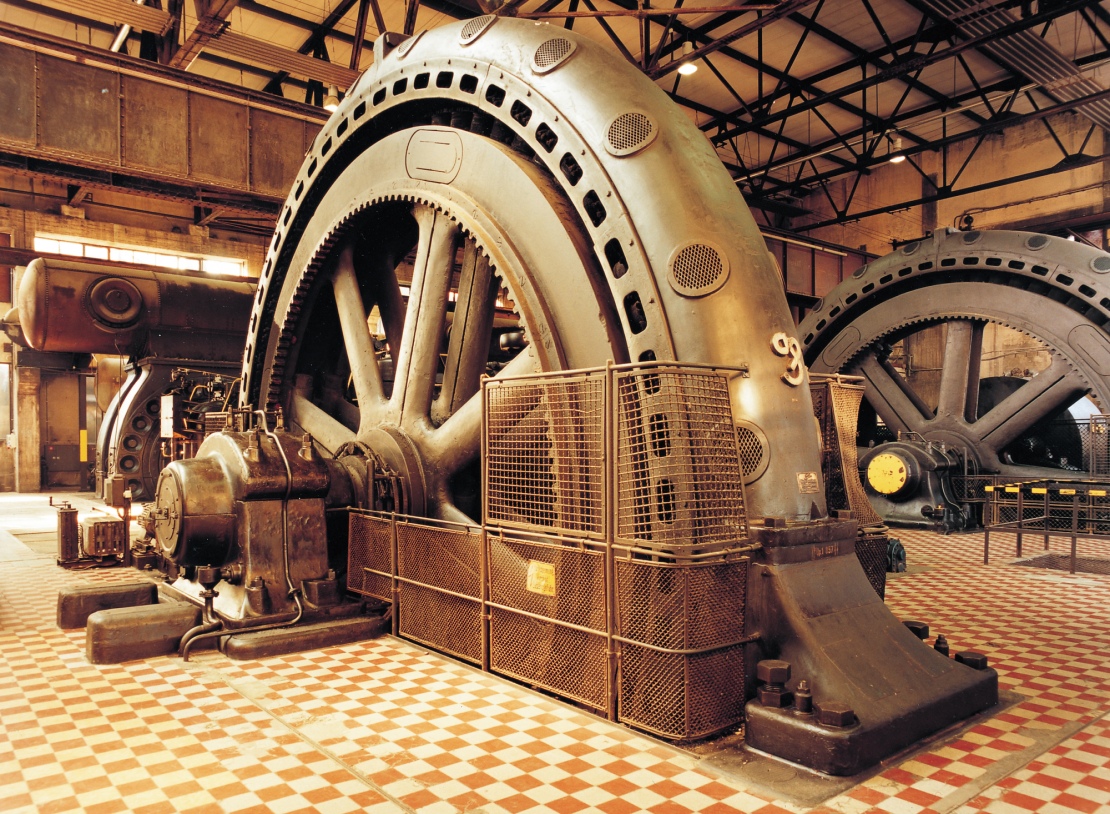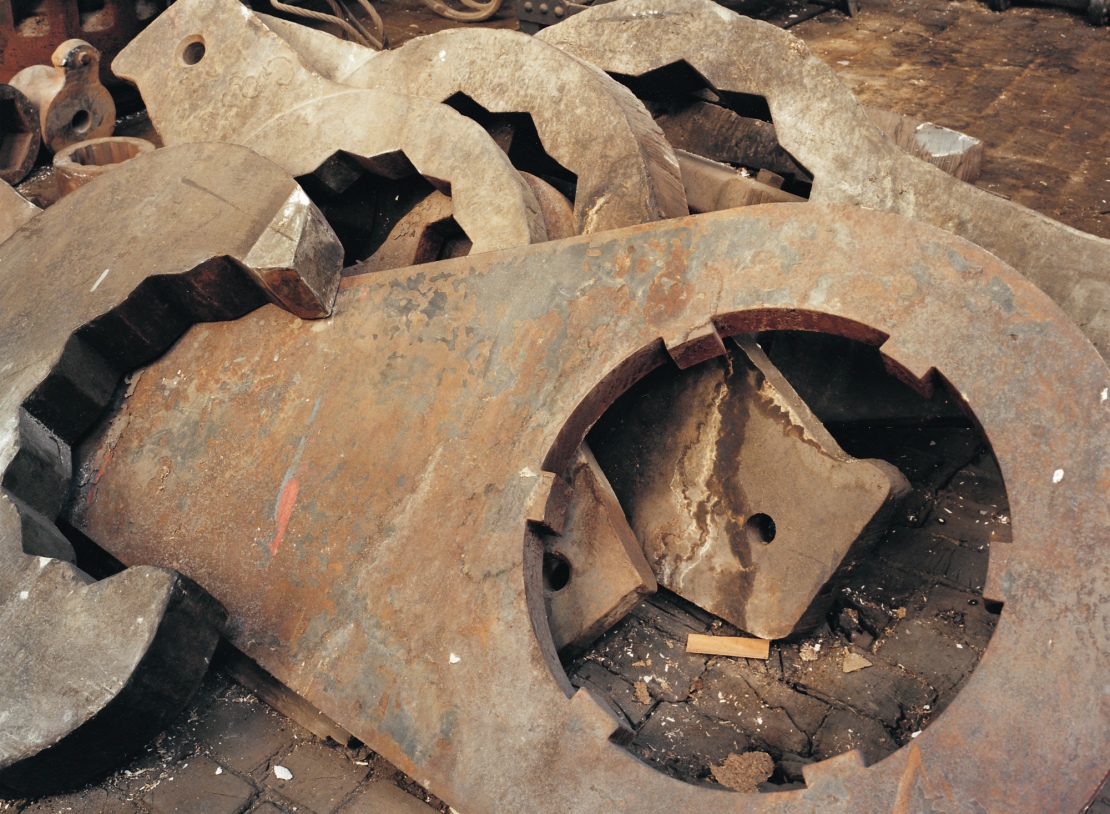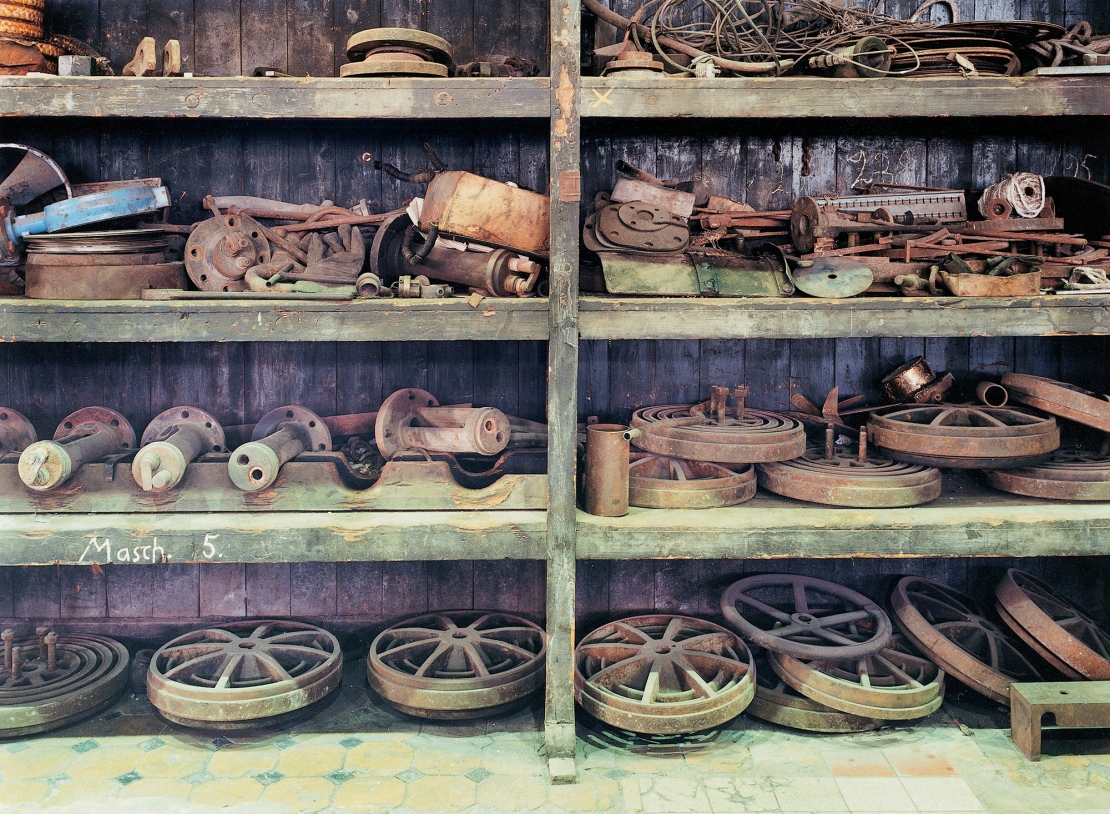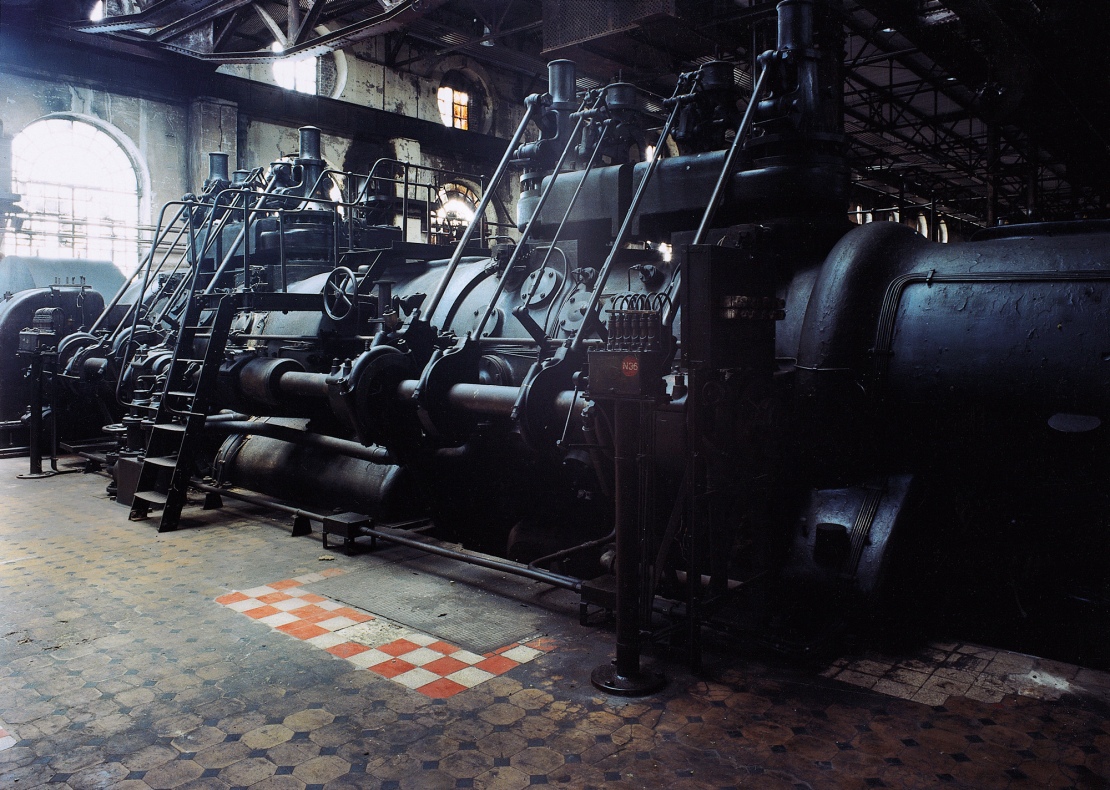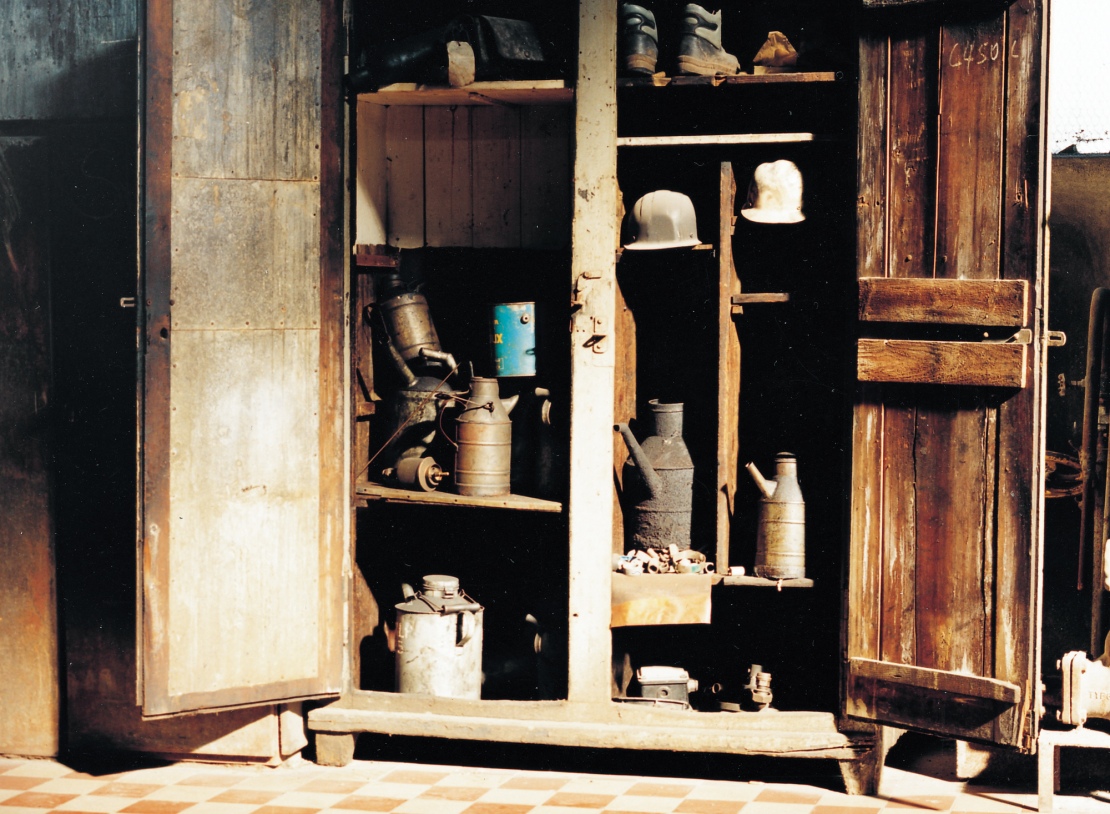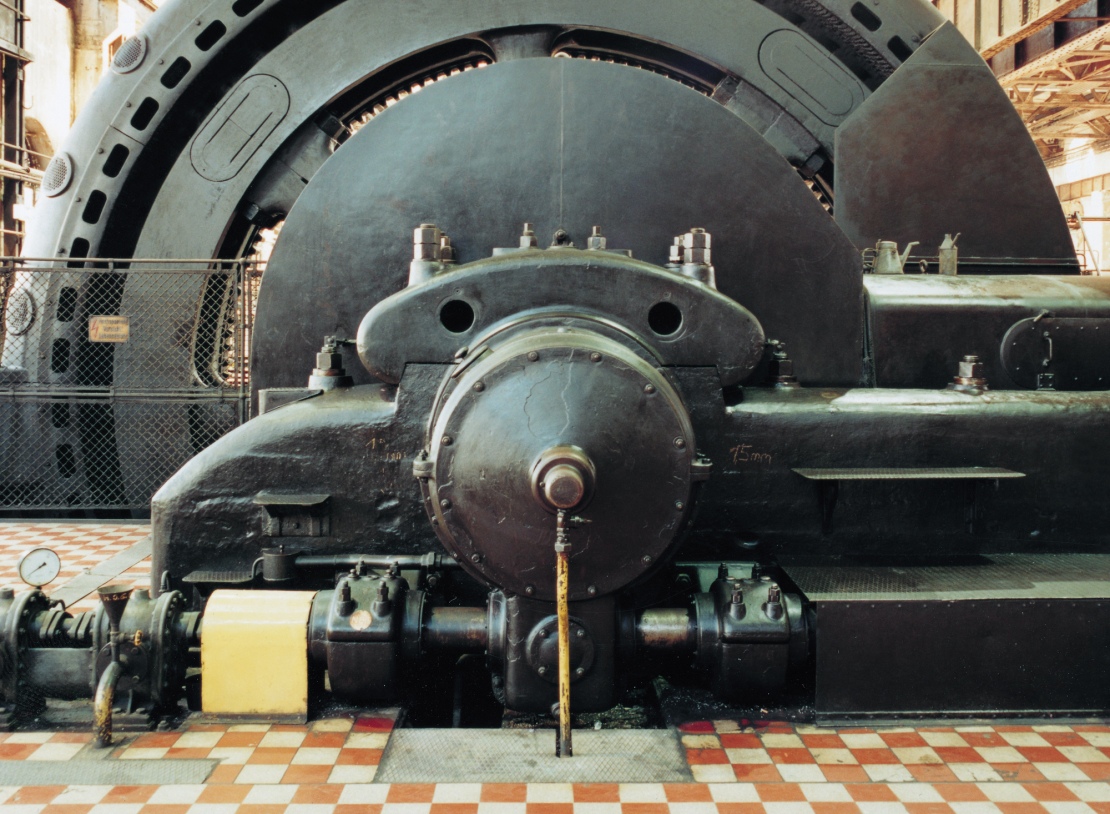Blower Hall
Blower Hall
Years of construction: 1900 to 1938
In operation: 85 years until the works were shut down
1900 saw the beginning of the construction of a new blower hall for four large gas blowers. These machines, which were state-of-the-art at the time, allowed the gas produced in large quantities by the blast furnaces to be effectively reused.
On completion of the hall, the steady increase in iron production before World War I meant that further machines were soon required. Further sections were added to the hall in 1904, 1907 and 1913. These are most evident today in the different shapes of the skylights. The blower shed reached its current size after the last expansion in 1938, which was carried out in reinforced concrete.
The Blowers
It was not until relatively late that inspiration came. In 1878, the German engineers Otto and Langen built the first gas engine. In 1894, the Deutz engineering works constructed the first engine run on blast furnace gas. At once, 'Röchling's Iron and Steelworks' adopted the new technology. In 1899, the first large-scale gas engine for the generation of electricity was ordered from M.A.N.. In 1901, the first gas blower went into operation in the newly built blower hall.
Blower hall | today
After the closure of the ironworks, the blower hall was secured and locked. This meant that most of the interior was retained as if in a time capsule, which has not been the case with most other blower halls in the world.
Since 1996, the blower hall has been used for events and exhibitions. For the "Mon Trésor. Europe's treasure in Saarland" (2020) exhibition, the existing installations were completely removed and long-forgotten treasures brought to light once more.
